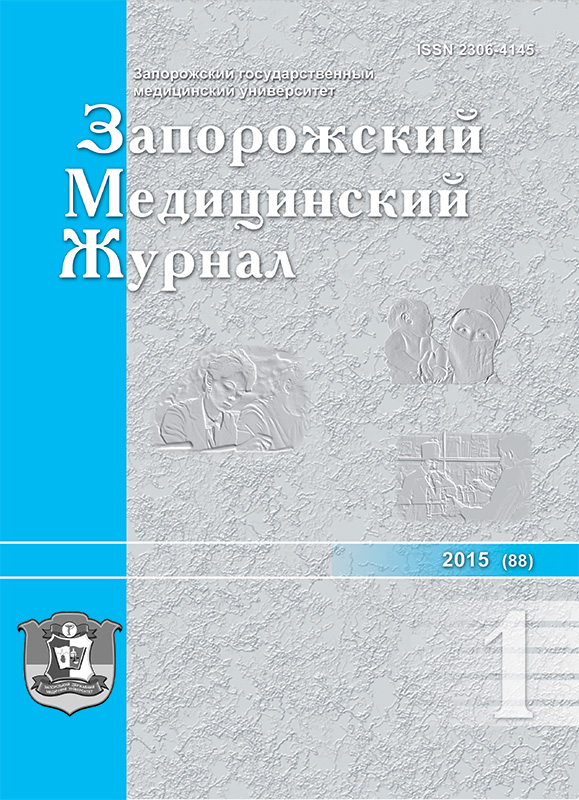Methodology for prediction of anticancer action of (2-oxo-2H-[1,2,4]¬triazino[2,3-c]-quinazolin-6-yl)thiones via QSAR and docking studies
DOI:
https://doi.org/10.14739/2310-1210.2015.1.39873Keywords:
Quinazolines, Triazines, Casein Kinase II, Quantitative Structure-Activity Relationship, Molecular Docking SimulationAbstract
Aimed to elaborate new group of protein kinase inhibitors we conducted receptor-based screening (docking, QSAR modeling) and biochemical testing for derivatives of (2-oxo-2H-[1,2,4]triazino[2,3-c]quinazolin-6-yl)thiones.
Methods and results. This study allowed identifying of new potential anticancer compounds among (2-oxo-2H-[1,2,4]triazino[2,3-c]quinazolin-6-yl)thiones’ derivatives.
Conclusion. Obtained data may be used for the development of more active and selective inhibitors of protein CK2 kinase. Besides that QSAR-models which were created may be used for planning of chemical modification of structure aimed to creation of new anticancer agents.
References
Barbosa, M. L., Lima, L. M., Tesch, R., Sant'Anna, C. M., Totzke, F., Kubbutat, M. H., et al. (2014). Novel 2-chloro-4-anilino-quinazoline derivatives as EGFR and VEGFR-2 dual inhibitors. Eur. J. Med. Chem., 71, 1–14. doi: 10.1016/j.ejmech.2013.10.058.
Berest, G. G., Voskoboynik, O. Y., Kovalenko, S. I., Antypenko, O. M., Nosulenko, I. S., Katsev, A. M., & Shandrovskaya, O. S. (2011). Synthesis and biological activity of novel N-cycloalkyl-(cycloalkylaryl)-2-[(3-R-2-oxo-2H-[1,2,4]triazino[2,3-c]quinazoline-6-yl)thio]acetamides. Eur. J. Med. Chem., 46, 6066–6074. doi: 10.1016/j.ejmech.2011.10.022.
Boyd, M. R. (1997). The NCI in vitro anticancer drug discovery screen. Concept, implementation and operation. Humana Press, 2, 23–43.
Cao, C., Albert, J. M., Geng, L., Ivy, P. S., Sandler, A., Johnson, D. H., & Lu, B. (2006). Vascular endothelial growth factor tyrosine kinase inhibitor azd2171 and fractionated radiotherapy in mouse models of lung cancer. Cancer. Res., 66(23), 11409–11415.
Carlomagno, F., Vitagliano, D., Guida, T., Ciardiello, F., Tortora, G., Vecchio, G., et al. (2002). ZD6474, an orally available inhibitor of KDR tyrosine kinase activity, efficiently blocks oncogenic RET kinases. Cancer. Res., 62(24), 7284–7290.
Denny, W. A. (2001). The 4-anilinoquinazoline class of inhibitors of theerbB famyli of receptors tyrosine kinases, IL. Farmaco, 56, 51–56.
Ferguson, A. D., Sheth, P. R., Basso, A. D., Paliwal, S., Gray, K., Fischmann, T. O., & Le, H. V. (2011). Structural basis of CX-4945 binding to human protein kinase CK2. FEBS Letters., 585(1), 104–110. doi: 10.1016/j.febslet.2010.11.019.
Gramatica, P., Chirico, N., Papa, E., Cassani, S., & Kovarich, S. (2013). QSARINS: A new software for the development, analysis, and validation of QSAR MLR models. Journal of Computational Chemistry, Software news and updates, 34, 2121–2132. doi: 10.1002/jcc.23361.
Hastie, C. J., McLauchlan, H. J., & Cohen, P. (2006). Assay of protein kinases using radiolabeled ATP: a protocol. Nature Protocols, 1(2), 968–971. doi: 10.1038/nprot.2006.149.
Kovalenko, S. I., Nosulenko, I. S., Voskoboynik, A. Y., Berest, G. G., Antypenko, L. N., Antypenko, A. N., & Katsev, A. M. (2012). Substituted 2-[(2-oxo-2H-[1,2,4]triazino[2,3-c]quinazolin-6-yl)thio]acetamides with thiazole and thiadiazole fragments: synthesis, physicochemical properties, cytotoxicity, and anticancer activity. Sci. Pharm, 80(4), 837–65. doi: 10.3797/scipharm.1208-07.
Kovalenko, S. I., Nosulenko, I. S., Voskoboynik, A. Y., Berest, G. G., Antypenko, L. N., Antypenko, A. N., & Katsev, A. M. (2013). Novel N-aryl(alkaryl)-2-[(3-R-2-oxo-2H-[1,2,4]triazino[2,3-c]quinazoline-6-yl)thio]acetamides: synthe¬sis, cytotoxicity, anticancer activity, COMPARE analysis and docking. Med. Chem. Res., 22, 2610–2632. doi: 10.1007/s00044-012-0257-x.
Marvin Sketch version: 6.3.0, (2014), Chem Axon. Retrieved from http://www.chemaxon.com.
Morris, G. M., Huey, R., Lindstrom, W., Sanner, M. F., Belew, R. K., Goodsell, D. S. & Olson, A. J. (2009). Autodock4 and AutoDockTools4: automated docking with selective receptor flexiblity. J. Computational Chemistry, 16, 2785–2791.
Pedretti. A., Villa. L., & Vistoli. G. (2014). VEGA – An open platform to develop chemo-bio-informatics applications, using plug-in architecture and script" programming. J.C.A.M.D., 18, 167–173.
Stewart, J. J. P. (2012). MOPAC2012. S.C. Chemistry. Retrieved from http://openmopac.net/MOPAC2012.html
Todeschini, R., & Consonni, V. (2000). Handbook of Molecular Descriptors. Mannhold R., Kubinyi H., Timmerman H. (Eds.). Weinheim, New York.
Todeschini, R., & Consonni, V. (2003). DRAGON software for the Calculation of Molecular Descriptors, web version 3.0 for Windows.
Vangrevelinghe, E., Zimmermann, K., Schoepfer J., Portmann, R., Fabbro, D., & Furet, P. (2003). Discovery of a potent and selective protein kinase CK2 inhibitor by high-throughput docking. J. Med. Chem., 46(13), 2656–2662. doi: 10.1021/jm030827e.
Downloads
How to Cite
Issue
Section
License
Authors who publish with this journal agree to the following terms:
Authors retain copyright and grant the journal right of first publication with the work simultaneously licensed under a Creative Commons Attribution License that allows others to share the work with an acknowledgement of the work's authorship and initial publication in this journal. 

